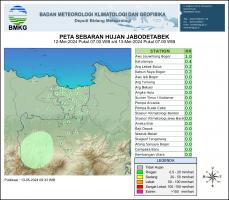| Current Cyclone | Cyclone Outlook | After Events Report | Historical Cyclone | Annual Reports | Cyclone Names | Learn About TC |
Tropical cyclone life cycle started from the formative until the decay.
It is divided into 4 stages :
- Formative stage
This stage is started when there is presentation of atmosphere disturbance. Satellite imagery shows convective area with cumulonimbus clouds spotted. Circulation centre is oftenly formed, though sometime appears at the head of curved cloud band. - Immature stage
Deep convective looks in a more regular shape, forming spiral cloud band or relatively round. The intensity is simultantly increasing with surface pressure decrease to less than 1000 millibar and maximum wind speed increase to reach gale force wind (wind at least ≥ 34 knots or 63 km/hr in speed). Maximum wind concentrated within ring area arround the centre. Circulation centre is clearly observed and cyclone eye start to formed. - Mature stage
In this stage, the cyclone form is relatively stable. Almost no changes in minimum pressure at the centre and maximum wind speed. Cyclonic circulation and gale area expands, satellite images shows more organised and symmetric cloud band. More intense cyclone may develop well defined eye. This phenomenon is characterized as the warmest area at the centre of cloud system with relatively calm wind and surrounded by thick convective cloud wall (eye wall). With exception that the cyclone stays in a very favourable environment, this stage typically last for less than 24 hours before it weakens. - Decay stage In this stage, the warm core starts to decay, central pressure rises and maximum wind area expand away from the centre. This stage may rapidly occur if the cyclone moves to unfavourable environment at higher latitude, colder sea surface temperature, or inland. Satellite imagery clearly shows decreasing of convective area, and dissipating of cloud band. Tropical cyclone lifetime is varied from one to 30 days, and about 7 in average.
« Cyclogenesis
Differences Between Cyclone, Tornado, Puting Beliung & Water Spout »










